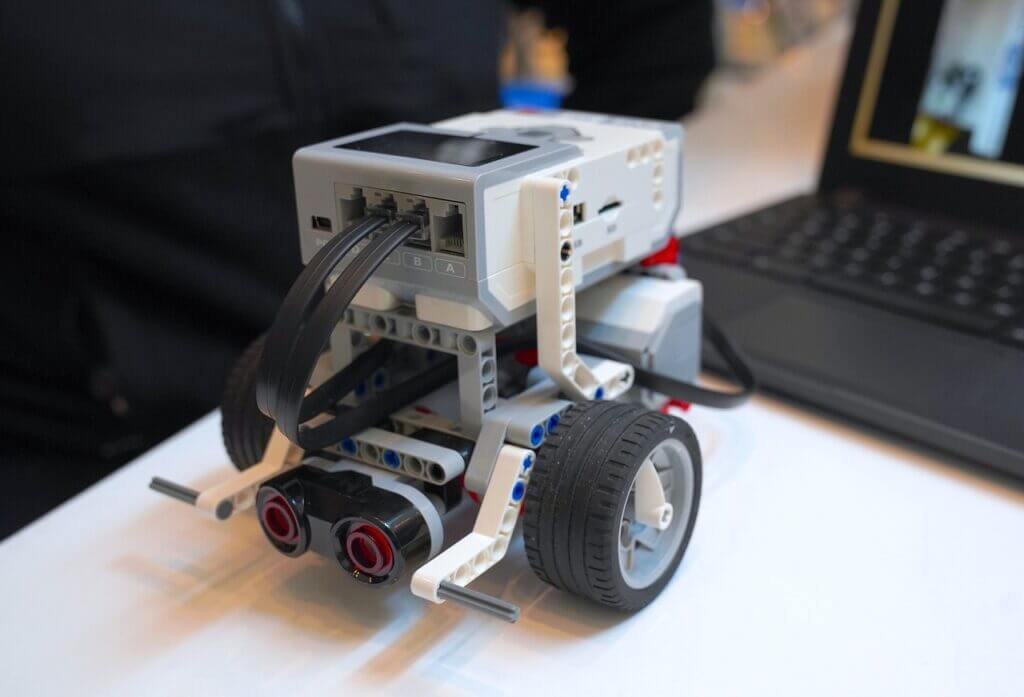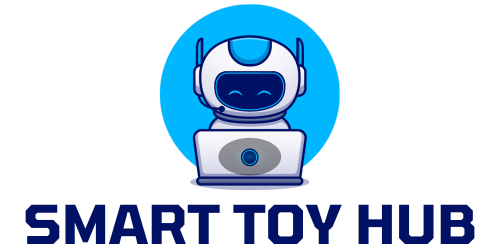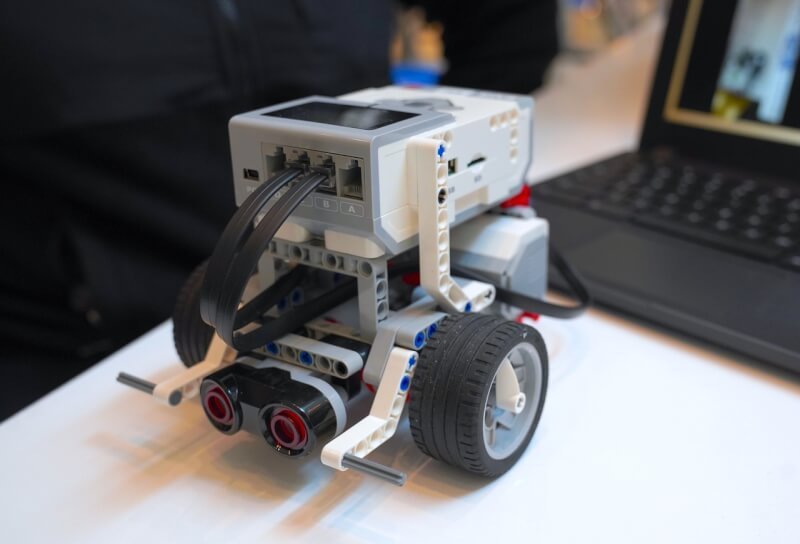In the quest for educational toys that make learning coding fun and interactive, the search for the best smart toys becomes a priority. These toys not only cultivate children’s curiosity and creativity, but also develop their computational thinking skills. With an array of options available, from robot kits to interactive puzzles, finding the ideal smart toy to teach coding can be a daunting task. This article aims to assist you in your search by highlighting some of the best smart toys that make learning coding an enjoyable and enriching experience for young learners.

Robotic Toys
Cozmo
Cozmo is a popular robotic toy that is designed to ignite coding skills in children. With its expressive personality and interactive capabilities, Cozmo brings coding to life in a fun and engaging way. By using the Cozmo app, children can program the robot to perform various actions, such as playing games, stacking blocks, and even expressing emotions. Cozmo’s ability to recognize faces and remember names adds another level of personalization to the learning experience. This robotic toy is a perfect introduction to coding for kids of all ages.
Dash and Dot
Dash and Dot are a dynamic duo of robotic toys that are ideal for teaching coding to young children. With their charming personalities and colorful designs, Dash and Dot make learning to code a playful experience. By using the Blockly coding language, children can program Dash and Dot to move, light up, make sounds, and complete various tasks. With a wide range of accessories and add-ons available, such as building brick connectors and xylophone attachments, children can expand their coding skills while exploring different creative avenues.
LEGO Mindstorms
LEGO Mindstorms is a powerful and versatile robotic toy that combines the fun of LEGO building with the world of coding. This kit provides children with the opportunity to build and program their own robots using LEGO bricks, motors, sensors, and an intelligent brick that serves as the robot’s brain. With the user-friendly software, children can program their creations to perform complex tasks, navigate mazes, and even compete in robot battles. LEGO Mindstorms is an excellent choice for both beginners and advanced coders, allowing children to unleash their creativity and problem-solving skills.
Sphero Bolt
Sphero Bolt is a robotic toy that offers a unique coding experience with its spherical design and advanced capabilities. This robotic ball is equipped with a programmable LED matrix, infrared sensors, and a durable exterior that can withstand rough play. By using the Sphero Edu app, children can code their own games, create animations, and even compose music with the built-in accelerometer and gyroscope. Sphero Bolt encourages hands-on learning and can be used both as a standalone toy or as part of a larger coding curriculum.
Coding Kits
littleBits Code Kit
The littleBits Code Kit is a comprehensive coding kit that combines physical elements with coding concepts. With its modular design, children can snap together various electronic building blocks to create circuits and interactive projects. Using the accompanying littleBits app, children can learn programming fundamentals through block-based coding and challenge themselves with increasingly complex coding projects. The littleBits Code Kit seamlessly integrates hands-on exploration with digital coding, making it an ideal tool for both beginners and experienced young coders.
Kano Coding Kit
The Kano Coding Kit offers a unique approach to teaching coding with its DIY philosophy. This kit provides all the necessary components, including a Raspberry Pi computer, a wireless keyboard, and a step-by-step guide, to build your own computer. This hands-on experience empowers children to not only learn coding but also understand the inner workings of a computer. The Kano app teaches coding concepts through game-like challenges and allows children to create their own projects, such as animations and music. The Kano Coding Kit is a great choice for children who enjoy assembling and customizing their own devices while learning how to code.
Osmo Coding Starter Kit
The Osmo Coding Starter Kit is an interactive coding kit designed to be used with an iPad or Fire tablet. Using physical coding blocks, children can arrange and connect the blocks to create sequences of commands that control characters on the tablet screen. The Osmo app provides a range of coding challenges, including puzzles, adventures, and open-ended creative projects. With the Osmo Coding Starter Kit, children can develop critical-thinking skills, logical reasoning, and problem-solving abilities while having fun with tangible coding elements.
Screen-Based Coding Games
Scratch
Scratch is a free online platform developed by MIT that allows children to create interactive stories, games, and animations by coding with blocks. With its user-friendly interface and colorful graphics, Scratch makes coding accessible to children as young as eight years old. The drag-and-drop coding blocks enable children to experiment with programming concepts, such as loops, conditionals, and variables, while unleashing their creativity. Scratch also provides an active online community where children can share their creations and collaborate with others, fostering a supportive and inspiring coding environment.
Code.org
Code.org is a nonprofit organization that offers a wide range of coding courses and activities for children of all ages. Their interactive coding games, tutorials, and puzzles are designed to introduce coding concepts in a fun and engaging way. Code.org features popular characters from movies and TV shows, such as Angry Birds and Star Wars, to make coding more relatable and exciting for children. The platform also includes resources for teachers, allowing them to integrate coding into their classrooms and provide their students with the tools they need to succeed in the digital age.
Tynker
Tynker is an educational platform that offers coding lessons, activities, and games designed specifically for children. With its intuitive visual programming interface, children can drag and drop coding blocks to create animations, games, and even mobile apps. Tynker’s curriculum covers a wide range of coding concepts, including loops, functions, and conditionals, and progresses in difficulty as children advance through the lessons. Tynker also features a coding community where children can showcase their creations, collaborate with peers, and participate in coding challenges.
Robot Turtles
Robot Turtles is a board game that introduces coding concepts to children as young as four years old. In this screen-free coding game, children act as the programmers, while their parents or friends serve as the computer. By giving instructions to move their turtle pawn and collect gems, children learn the fundamentals of coding, such as sequencing and problem-solving. Robot Turtles offers a hands-on and social learning experience, making it an excellent introductory coding game for young children.
Physical Coding Games
Cubetto
Cubetto is a friendly wooden robot and coding game designed to teach programming fundamentals to children as young as three years old. The game consists of a programming board, a set of colorful coding blocks, and a wooden robot named Cubetto. Children place the coding blocks on the programming board to create a sequence of commands for Cubetto to follow. By manipulating the blocks, children learn about algorithms, loops, and functions, developing their logical thinking and problem-solving skills. Cubetto’s tactile and screen-free approach makes it a perfect coding game for young children.
Bee-Bot
Bee-Bot is a programmable floor robot that encourages children to explore coding and problem-solving through hands-on play. With its simple and intuitive keypad, children can program Bee-Bot to navigate through mazes, follow paths, and complete various challenges. Bee-Bot’s physical presence and tactile buttons allow children to see the immediate impact of their coding decisions, enhancing their understanding of cause and effect. Bee-Bot is suitable for children as young as three years old and is an excellent coding game for introducing basic programming concepts.
Code & Go Mouse
Code & Go Mouse is a coding game that combines critical-thinking skills with hands-on coding activities. In this game, children program a robotic mouse to navigate through a maze and reach the cheese. By planning a sequence of steps using directional coding cards, children learn about sequential thinking and problem-solving. Code & Go Mouse fosters logical reasoning and spatial awareness, and the game can be expanded with additional coding challenges and maze configurations. This coding game is perfect for young children who enjoy spatial puzzles and creative problem-solving.
Augmented Reality Toys
Ozobot Bit
Ozobot Bit is a pocket-sized robot that brings augmented reality to coding education. By drawing colored lines and patterns on a piece of paper, children can program Ozobot Bit to follow specific paths and perform different actions. With its built-in sensors, Ozobot Bit can detect colors and respond to changes in the environment. The Ozobot app provides a range of coding activities and challenges, allowing children to learn about programming concepts, such as loops, conditionals, and variables. Ozobot Bit combines the physical and digital worlds, making coding accessible and exciting.
Circuit Maze
Circuit Maze is an augmented reality game that introduces children to the principles of circuitry and logical reasoning. In this game, children arrange circuit pieces to create a functioning pathway for a current to illuminate different components on the game board. By solving the challenges, children learn about circuit building, electrical connections, and problem-solving skills. The augmented reality feature adds an interactive and immersive element to the gameplay, making learning about circuits both educational and enjoyable.
AR Robot Coding
AR Robot Coding is an augmented reality game that combines physical coding blocks with virtual robots. By arranging the coding blocks on a tabletop surface, children can program virtual robots to perform various actions and solve challenges. The augmented reality technology brings the virtual robots to life, allowing children to see their coding creations in action. With its interactive and tactile nature, AR Robot Coding provides a unique coding experience where children can experiment, learn, and have fun with coding in both the physical and virtual worlds.
App-Connected Toys
Osmo Coding Jam
Osmo Coding Jam is an app-connected toy that transforms physical coding blocks into musical creations. By arranging the coding blocks in different sequences, children can compose their own melodies, create beats, and remix songs using the Osmo app. With its interactive and intuitive interface, Osmo Coding Jam allows children to experiment with coding concepts, such as loops and conditionals, while developing their musical creativity. This app-connected toy provides a playful and engaging way for children to explore both coding and music.
Robotis Play 600
Robotis Play 600 is an app-connected toy that combines robotics and coding to inspire children’s creativity and problem-solving skills. With its interchangeable parts, children can build various robots, such as dinosaurs, animals, and vehicles. The Robotis app provides step-by-step instructions and coding challenges to guide children in building and programming their creations. By using the app, children can control their robots’ movements, sounds, and LED lights, fostering their understanding of coding concepts, such as sequences and variables. Robotis Play 600 offers a hands-on and interactive coding experience for aspiring young engineers and programmers.
SAM Labs
SAM Labs is an app-connected toy system that allows children to design and program their own inventions using a variety of electronic modules. With modules for inputs, outputs, and sensors, children can snap together the components to create projects ranging from simple circuits to complex robots. The SAM Labs app provides a visual coding interface that enables children to program their inventions by arranging blocks of code. The app also offers a library of projects and challenges to help children explore different coding concepts and inspire their creativity. SAM Labs provides a versatile and customizable coding experience for aspiring young inventors.
Toy Code-Teaching Tools
Code-a-Pillar
Code-a-Pillar is a toy code-teaching tool that introduces basic programming concepts to preschoolers in a fun and interactive way. By arranging different colored segments, children can program the Code-a-Pillar to move in certain directions and perform specific actions. Each segment represents a specific command, and children can experiment with different combinations to create unique sequences. Code-a-Pillar encourages children to think logically, problem-solve, and experiment with cause and effect relationships. This toy code-teaching tool is a perfect introduction to coding for young children, fostering their early interest in STEM education.
Fisher-Price Think & Learn Code-a-Gator
Fisher-Price Think & Learn Code-a-Gator is a toy code-teaching tool that combines basic coding skills with imaginative play. With its friendly alligator design and colorful coding cards, children can program the Code-a-Gator to follow paths, interact with objects, and perform actions. The coding cards represent simple commands, and children can arrange them to create a sequence of actions for Code-a-Gator to follow. This toy code-teaching tool promotes critical-thinking skills, problem-solving abilities, and logical reasoning while engaging children in imaginative play. The Code-a-Gator is a playful and engaging way to introduce coding to young children.
Educational Robots
LEGO Boost
LEGO Boost is an educational robot system that combines the timeless fun of LEGO bricks with the excitement of coding and robotics. With the LEGO Boost set, children can build and program five different models, including a robot, a guitar, and a rover. The LEGO Boost app provides step-by-step instructions and a visual coding interface that allows children to program their creations to move, make sounds, and even interact with the environment. LEGO Boost offers an immersive and hands-on coding experience that encourages creativity, problem-solving, and STEM learning.
Makeblock mBot
Makeblock mBot is an educational robot kit that allows children to build and program their own robots. With its modular design and easy-to-use programming interface, children can assemble their mBot using various components and sensors, and then program it to follow lines, avoid obstacles, and complete challenges. The mBlock coding software provides a drag-and-drop interface that introduces children to coding concepts, such as loops, conditionals, and variables. Makeblock mBot combines hands-on construction with coding, making it an ideal educational robot for children to explore the world of robotics and STEM learning.
Ozobot Evo
Ozobot Evo is an educational robot that teaches coding through a combination of physical and digital interactions. With its compact size and programmable LEDs, Ozobot Evo can follow colored lines, respond to changes in color, and perform various actions. Children can program Ozobot Evo using the Ozobot app, which features block-based coding and a range of interactive coding challenges. Through coding Ozobot Evo, children learn about directions, loops, conditionals, and variables, developing their logical thinking and problem-solving abilities. Ozobot Evo offers a flexible and engaging approach to coding education, allowing children to explore and experiment with coding concepts.
Machine Learning Toys
Anki Cozmo
Anki Cozmo is a machine learning toy that combines artificial intelligence with interactive play. With its advanced vision and facial recognition capabilities, Cozmo can recognize and remember individual faces, express emotions, and even play games. Cozmo’s program is continually updated and evolves over time, allowing the robot to learn and develop new skills. Through interactions with Cozmo, children can learn about machine learning principles, develop their problem-solving skills, and engage in creative play. Anki Cozmo offers a unique and interactive way to introduce children to the world of artificial intelligence and machine learning.
Vector Robot
Vector Robot is a companion robot that utilizes artificial intelligence and machine learning to provide a personalized and interactive experience. With its expressive face, voice recognition, and autonomous capabilities, Vector can respond to commands, answer questions, and engage in conversations. Vector’s machine learning algorithms allow it to learn and adapt to its environment, making it a dynamic and engaging companion. Children can interact with Vector through the accompanying app, where they can also access a range of coding activities and challenges. Vector Robot combines cutting-edge technology with playful interactions, offering children an immersive and educational experience.
Meccano M.A.X.
Meccano M.A.X. is a robot-building kit that incorporates artificial intelligence and machine learning. With over 300 parts and step-by-step instructions, children can build their own robot companion that is programmable and interactive. M.A.X. can respond to voice commands, navigate its environment through built-in sensors, and even recognize faces. Through the Meccano app, children can access the SmartBot feature, which allows them to program M.A.X. using a block-based coding interface. Meccano M.A.X. combines hands-on construction with advanced technology, offering children a fun and educational introduction to artificial intelligence and machine learning.
Offline Programmable Toys
ThinkFun Robot Turtles Board Game
ThinkFun Robot Turtles is a board game designed to teach coding concepts to children as young as four years old. In this game, children act as the programmers, while their parents or friends serve as the computer. By giving instructions to move their turtle pawn and collect jewels, children learn about programming fundamentals, such as sequencing, loops, and conditionals. Robot Turtles provides a screen-free and tactile coding experience, allowing children to develop their problem-solving skills and logical thinking.
Robot Wars Coding Board Game
Robot Wars is a coding board game that combines competition and coding challenges. In this game, players take on the role of robot engineers, building their own robots and programming them to battle against each other. By using coding cards to plan their robot’s moves, players learn about programming concepts, such as loops, conditionals, and functions. Robot Wars provides an exciting and interactive coding experience that encourages strategic thinking and problem-solving. This offline programmable toy is perfect for children who enjoy friendly competition and want to deepen their coding skills.
In conclusion, there are a wide variety of smart toys available for teaching coding to children. Whether through robotic toys, coding kits, screen-based games, physical coding games, augmented reality toys, app-connected toys, toy code-teaching tools, educational robots, machine learning toys, or offline programmable toys, children can engage in hands-on learning experiences that foster creativity, problem-solving skills, and a strong foundation in coding. These smart toys provide a fun and interactive way for children to develop critical-thinking skills, logical reasoning, and digital literacy, preparing them for success in the ever-evolving world of technology.

